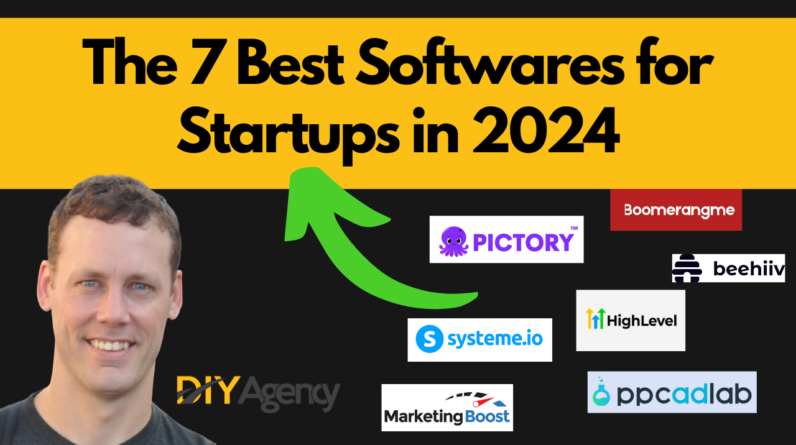You want to make the most of your affiliate marketing banners and ads, but you’re not quite sure how to go about it. Well, you’re in luck! This article will provide you with some valuable strategies for effectively utilizing these marketing assets. From choosing the right banner sizes to optimizing their placement on your website, you’ll discover practical tips that can help increase your affiliate marketing success. So, let’s dive right in and explore these effective strategies together!
1. Choosing the Right Affiliate Marketing Platform
When it comes to utilizing affiliate marketing banners and ads effectively, the first step is choosing the right affiliate marketing platform. There are numerous platforms available, each with its own set of features and tools. It’s essential to conduct thorough research and compare different platforms to find the one that best suits your needs.
1.1 Research Different Affiliate Marketing Platforms
Start by researching and exploring different affiliate marketing platforms. Look for platforms that are reputable, well-established, and have a track record of success. Consider factors such as the platform’s user interface, ease of use, and the range of marketing tools it offers. This research will help you narrow down your options and make an informed decision.
1.2 Consider the Features and Tools Offered
Next, consider the features and tools offered by each affiliate marketing platform. Look for platforms that provide advanced analytics, conversion tracking, and split testing capabilities. These features will enable you to monitor the performance of your banners and ads and make data-driven optimizations to improve conversions.
1.3 Read Reviews and Testimonials
Reading reviews and testimonials from other affiliate marketers can provide valuable insights into the strengths and weaknesses of different affiliate marketing platforms. Look for reviews that highlight the platform’s customer support, reliability, and overall user experience. By learning from the experiences of others, you can make a more informed decision.
1.4 Look at the Affiliate Commission Rates
Affiliate commission rates vary from platform to platform. It’s crucial to consider the commission rates offered by different platforms before making a decision. Look for platforms that offer competitive commission rates and consider how they align with your revenue goals and the expected profitability of the products or services you’ll be promoting.
2. Understanding Your Target Audience
Understanding your target audience is essential for effectively utilizing affiliate marketing banners and ads. By gaining insights into your audience’s demographics, preferences, and behaviors, you can create more targeted and persuasive marketing materials.
2.1 Create Buyer Personas
Start by creating buyer personas, which are fictional representations of your ideal customers. Consider factors such as age, gender, income level, interests, and pain points. This information will help you tailor your banners and ads to resonate with your target audience and address their specific needs.
2.2 Conduct Market Research
Conducting market research is crucial in understanding your target audience on a deeper level. Analyze industry trends, competitor strategies, and consumer behavior to gain valuable insights. Use tools like surveys, interviews, and customer feedback to gather data and identify patterns that can inform your marketing decisions.
2.3 Analyze Website Traffic
Analyze your website traffic using Google Analytics or similar tools to gain insights into your audience’s preferences and behaviors. Look at metrics such as demographics, interests, and the pages they visit most frequently. This data will help you understand which banners and ads are resonating with your audience and which ones are underperforming.
2.4 Utilize Social Media Analytics
If you have a strong presence on social media platforms, analyze your social media analytics to understand your audience’s engagement and preferences. Look at metrics such as likes, comments, and shares to identify the types of content that resonate most with your social media followers. Use this information to align your banners and ads with their interests and preferences.
3. Selecting Relevant Affiliate Programs
Once you understand your target audience, it’s important to select relevant affiliate programs that align with their needs and interests. Choosing the right affiliate programs will ensure that the products or services you promote through your banners and ads are compelling and valuable to your audience.
3.1 Identify Niche-Specific Affiliate Programs
Look for niche-specific affiliate programs that offer products or services specifically tailored to your target audience. By partnering with programs that cater to your audience’s specific needs, you’ll increase the chances of conversions and maximize the relevance of your banners and ads.
3.2 Evaluate the Quality of Products or Services
Before committing to an affiliate program, thoroughly evaluate the quality of the products or services they offer. Look for programs that have a good reputation, positive customer reviews, and high-quality offerings. Ensuring the quality of the products or services you promote is vital to maintaining the trust and loyalty of your audience.
3.3 Assess Affiliate Program Reputation
Research the reputation of the affiliate programs you’re considering by reading online reviews and testimonials from other affiliates. Look for programs that have a solid track record, prompt payment systems, and effective support for their affiliates. Partnering with reputable affiliate programs will not only boost your credibility but also make your affiliate marketing efforts more efficient and effective.
3.4 Consider Commission Structures and Payouts
Examine the commission structures and payout systems of different affiliate programs. Compare the commission rates, payment frequency, and minimum payout thresholds to ensure they align with your revenue goals and preferences. Consider whether you prefer recurring commissions, one-time payouts, or a combination of both. Choose programs that offer fair and competitive commission structures to maximize your earnings.
4. Designing Engaging Banners and Ads
Once you’ve chosen the right platform and established an understanding of your target audience, it’s time to design engaging banners and ads that capture their attention and drive conversions.
4.1 Use Attention-Grabbing Images
Choose attention-grabbing images that align with your brand and resonate with your target audience. Images should be visually appealing, relevant to the product or service being promoted, and evoke emotional responses. High-quality and eye-catching images will increase the likelihood of your banners and ads being noticed and clicked on.
4.2 Create Compelling Call-to-Actions
Craft compelling call-to-actions (CTAs) that motivate your audience to take action. Use persuasive language, highlight the benefits of the product or service, and create a sense of urgency. CTAs should be clear, concise, and easy to understand. Experiment with different CTAs to find the ones that generate the highest click-through and conversion rates.
4.3 Optimize Banner Placement
Carefully consider the placement of your banners and ads on your website or other platforms. Place them in highly visible areas where your audience is likely to engage with them. Test different placements and monitor the click-through rates to determine the optimal positioning that drives the most conversions.
4.4 Ensure Responsive Design
With the increasing use of mobile devices, it’s crucial to design banners and ads that are responsive and mobile-friendly. Optimize your designs to ensure they display correctly on different screen sizes and resolutions. Failure to do so may result in a negative user experience and lower conversion rates. Continuously test and optimize your banners and ads for responsiveness to reach a wider audience.
Stay tuned for the rest of the article!







